Photo
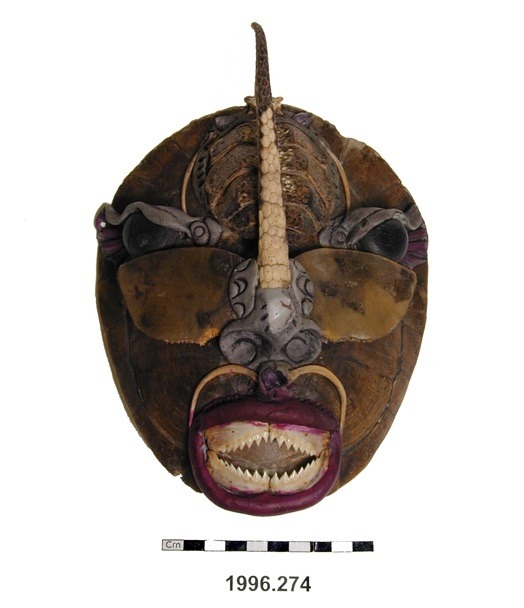
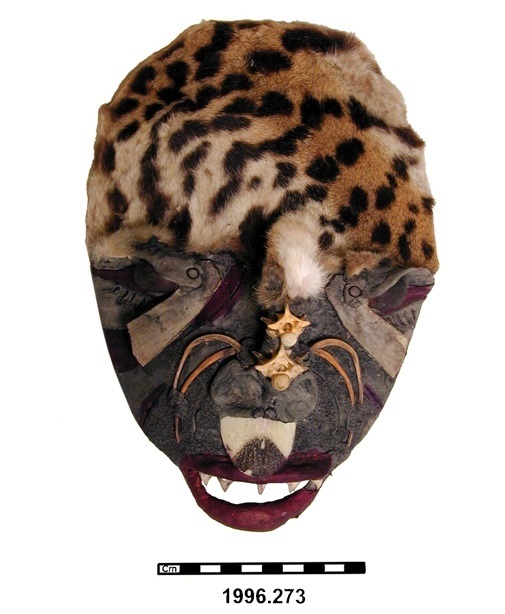
These two amazingly bizarre masks are from Manaus, Brazil. They are made from tortoise shells, which have been decorated with lots of other animal remains including bones, teeth, and even an armadillo tail!
180 notes
·
View notes
Photo

Owl Mask
Nisga’a (Niska)
British Columbia
1850-1880
National Museum of the American Indian
646 notes
·
View notes
Photo
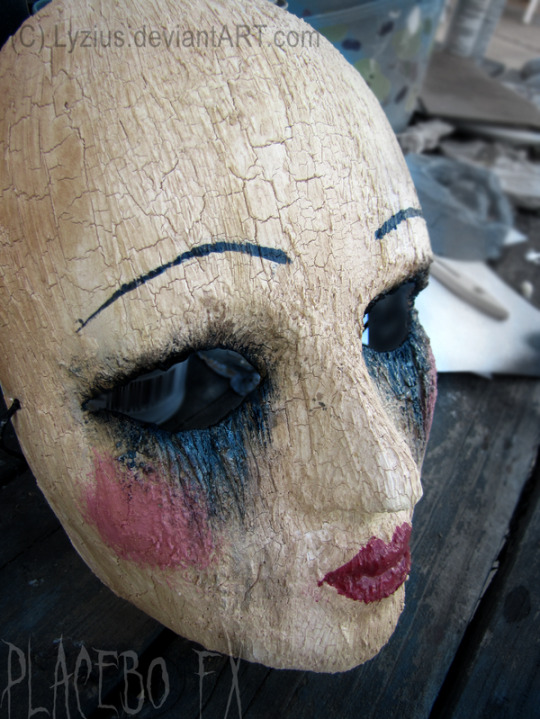
This is a Cracked Doll Mask made by Lyzius on Deviantart. Masks of its likeness are available for sale here.
0 notes
Photo
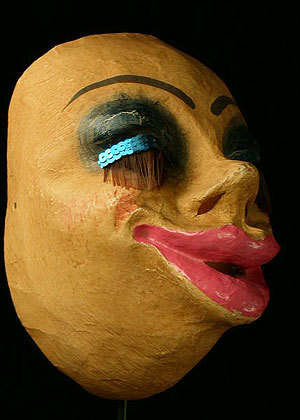
This German Harlot Mask is used for Fasching (or Carnival), a celebration much like Mardi Gras which takes place in a multitude of cities and villages along east and south Germany, as well as parts of Austria.
It is papier mache and features wire eyelashes, glitter, and sequins on the eyelids.
#harlot#germany#fasching#carnival#mardi gras#austria#eyelashes#glitter#sequins#papier mache#tramp#mask
31 notes
·
View notes
Photo

This papier mache Hedgehog Mask was is available on Jevgeniamasks on Etsy. The artist is Latvian Yevgeniya Kilupe. The mask is painted with guache, is lacquered and features a rubber strap for wear.
0 notes
Photo

This Vintage Style Blonde Smoking Flapper Mask was made by flapperdashery on the Etsy community. It features a removable cigarette and has an elastic band for security. It is hand painted papier mache and its siblings are available in a great number of hair and eye colours.
1 note
·
View note
Photo

This Romanian Folk Mask is made of cloth, human hair and beans.
These masks were used historically for initiation purposes and fertility rituals. In the modern age they are used for large holiday celebrations to represent characters from folk mythology. They are worn solely by men and to speak the name of the mask bearer while in costume is forbidden. This particular mask was made by Albu Ion of the Bucovina region.
15 notes
·
View notes
Photo

This Venetian Bird Mask is made of firm papier mache and is painted to sparkle. It is signed by the artisan ("Barbare") and is intended for carnival use.
5 notes
·
View notes
Photo
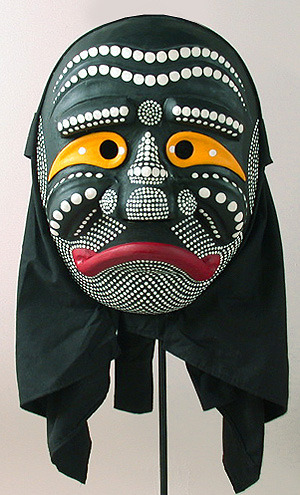
This Korean Monk Mask is from Yangju, South Korea.
It is used in the Yangju Pyolsandae Nori dance drama. In it, the character is an ugly old man who attempts to seduce a young, beautiful girl. The marks are intended to suggest pock marks or disease. The colouring of the mask denotes a specific character, of which there are over 20 and most characters are intended to mock members of the upper class. The hood is used to help secure the mask.
1 note
·
View note
Photo

This Indian Lion Mask depicts the divine lion, who acted as the divine vahana (or vehicle) of the goddess Durga.
"According to Markendaya Purana the goddess Durga has assumed ten different forms in order to destroy two great demons, Shambhu and Nishambhu. It is said that at the close of the Tretayuga, these two giants by their austerities had obtained great powers. Being exalted above the gods they began to fight against them. They achieved many victories and gods were reduced to the deplorable state of helplessness. They solicited the help of Brahma and Vishnu, who referred them to go to Shiva. Shiva advised them to pray to Durga, who could be able to defeat the two demons. Finally when gods appealed to Durga for ending their troubles, she agreed.
Durga assumed the form of a beautiful woman and first enticed the minds of the two demons. Both of them sought to capture her and sent his best generals with a huge army to capture this female. These two generals named Chundu and Mundu went to the Himalayas but were defeated and killed by the goddess Durga and her mount, the divine lion.
Now the two giants, Shambhu and Nishambhu, themselves marched to the Himalayas to capture Durga. These two demons had a general who had a blessing that the drops of blood falling on the ground from his body would create thousands of demons. At last Durga could annihilate him only when Durga's two forms namely Chandee and Kali both combined to neutralize this blessing. In the fierce engagement the goddess opened her mouth and drank every drop of blood before it fell on the ground while the other counterpart fought the demons and that general together. Eventually both the giants were killed."
The mask is 17 inches long and is made of heavy papier mache and hair.
7 notes
·
View notes
Photo

This Mexican Viejo Mask (viejo meaning an old person or old item, in this case male) is from Carpinteros, Veracruz. It was carved by Ciriaco Gonzalezis and is 9 inches long.
One major point of interest on this mask is the four eye slits.
The back of the mask appears previously worn, but has been scrubbed down to make presentable for sale. This is common of Mexican mask selling.
6 notes
·
View notes
Photo

Tastoan Warrior masks are used in Tanola, Mexico in a dance on the feast day of Santiago--the 25th of July. The males of Tanola are the mask-bearers and their dance represents their battle against Santiago, Spain's patron saint. The current interpretation leans further towards a representation of Spain's Mexican conquest and suggests the battle between indigenous Tastoan warriors and the Spanish. The dance itself has been performed since the 12th century, first seen in Spain, and was transferred to Mexican soil in the 1500's.
The masks were made traditionally of clay, however, for reasons of convenience, they are now made predominantly of leather. They were also originally painted with anilines, commonly used for wood dye. Anilines have been replaced with acrylics.
A past tradition was to reuse the base of every mask every year and to remove the external parts for the creation of a new mask from the old. Now it is much more common for masks to be made completely fresh each year.
0 notes
Photo

This Chinese Nuo mask depicts a military general.
Nuo is an ancient culture based on a series of rituals intended to ward off evil and disease. During such rituals, people would shout, "Nuo, Nuo!" The Nuo ritual was first recorded on tortoise shells during the Shang Dynasty (16th-11th Century BCE). It was performed first in the court of the royals, and then spread to the Chinese countryside. Some spring festivals in parts of remote mountainous regions still exhibit the Nuo dance.
Nuo masks have been used both for sacrificial and dramatic purposes. During a sacrifice, a ritual leader wore a golden mask with four eyes to scare off haunts and demons. Nuo masks have specific character roles for each variety. 24 is the typical minimum amount of masks seen in a Nuo drama.
3 notes
·
View notes
Photo
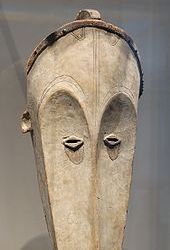
Ngil (or gorilla) masks were historically used by the Fang of equatorial-Atlantic Africa in male-led secret societies for initiation and punishment purposes.
Fang masks are typically covered in kaolin, a white clay. White being the color associated with the afterlife in the Fang culture, most Fang masks harbor a spiritual connection. Fang masks typically bear long heart-shaped faces with thin noses.
23 notes
·
View notes
Photo
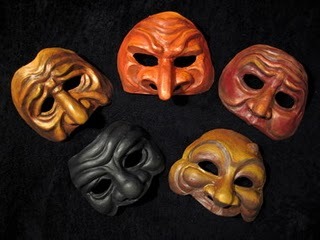
Commedia dell'Arte is an Italian form of stage acting that involves improvisation based on a pre-determined theme or scenario. Commedia dell'Arte masks require the actor to portray changing emotion through body language. Jumping about and the use of vulgar gestures is characteristic of Commedia dell'Arte.
Similar to Nogaka, strong character types are depicted through the masks. Among them are Arlecchino, the acrobatic, childlike character and Pedrolino, who was the precursor to the modern clown. There are many regional variations of these characters.
39 notes
·
View notes
Photo
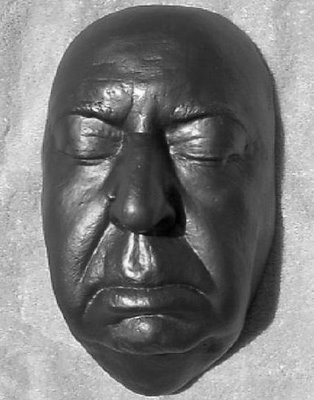
Death Masks are casts of a person's face made with wax or plaster. They are typically made after death, and are used to remind the remaining family of the depicted person, as well as guard against evil. Death Masks are thought to be spiritual channels between living and dead. They have been used world-wide and date back to the Roman empire.
12 notes
·
View notes
Photo
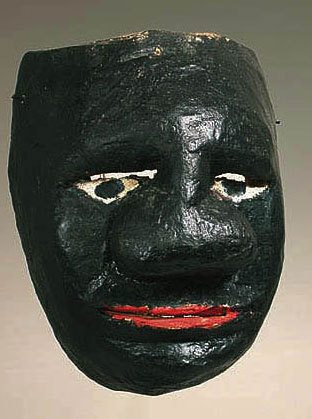
"Negrito Masks are used in the Danza de Los Tejorones and several other dances throughout Mexico. The color black was associated with a number of powerful deities in the Prehispanic pantheon. When the Spanish conquerors imported African slaves to work in their mines and plantations, they were regarded by many of the local Indians as superhuman figures posessing magical powers. Negrito masks are often modeled after real African-Mexicans, and in this one you can see an especially broad nose. Large lips are more frequently used."
83 notes
·
View notes